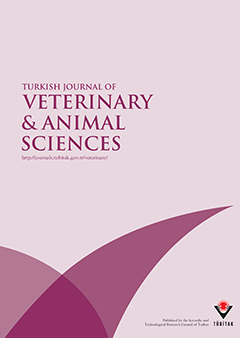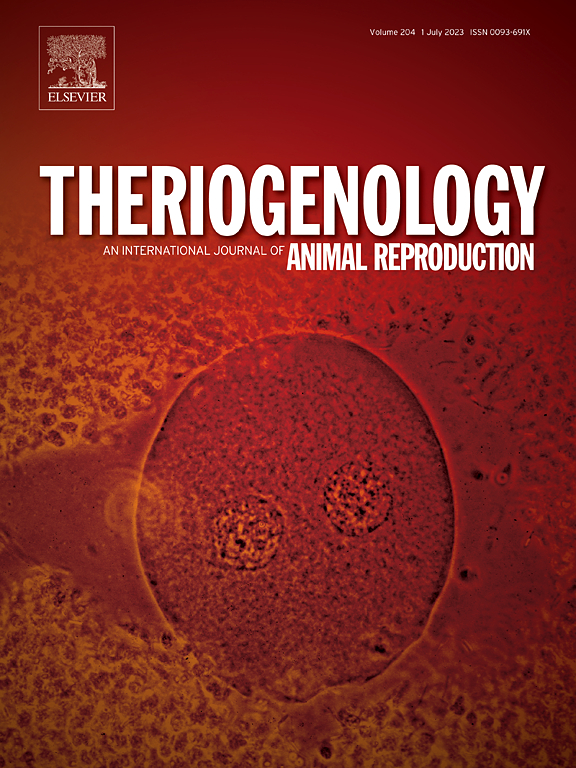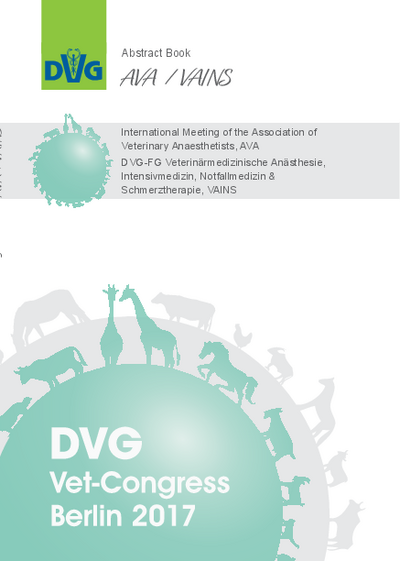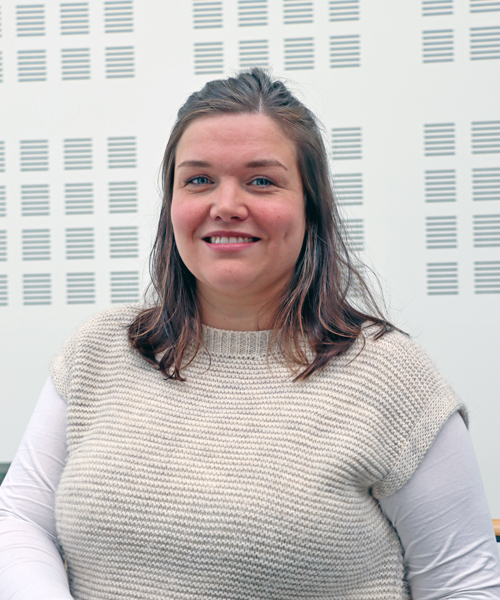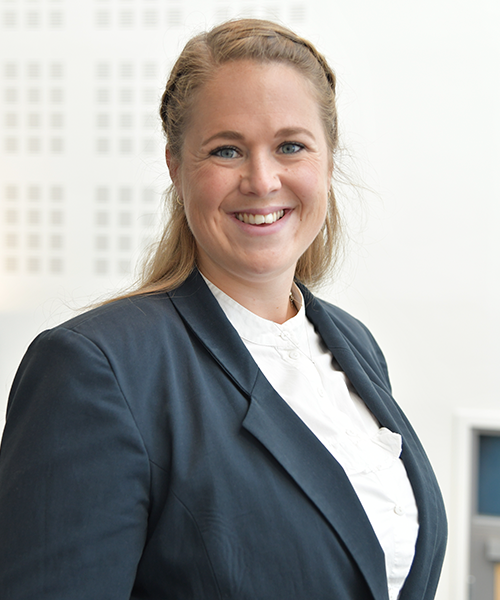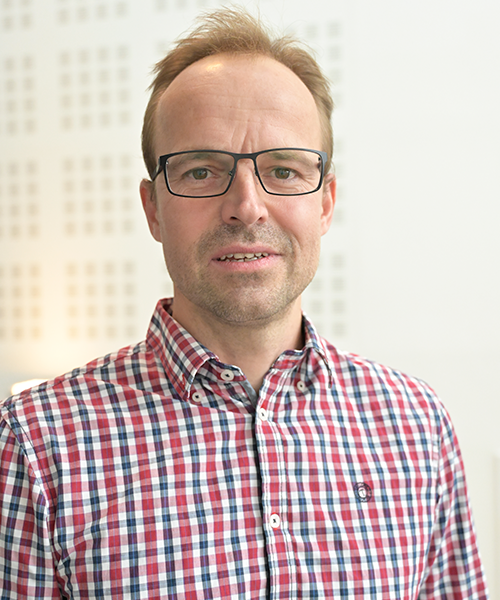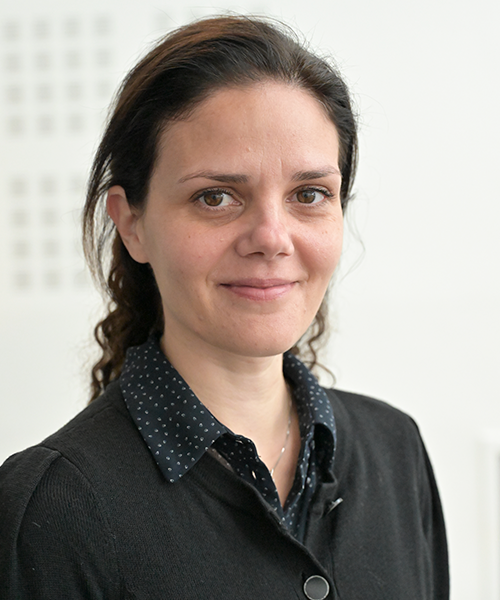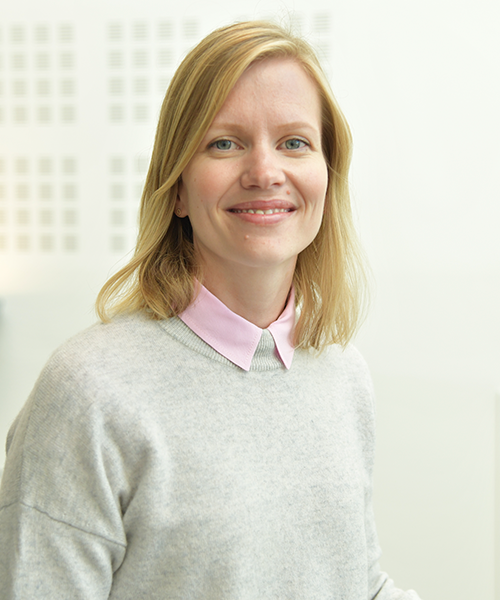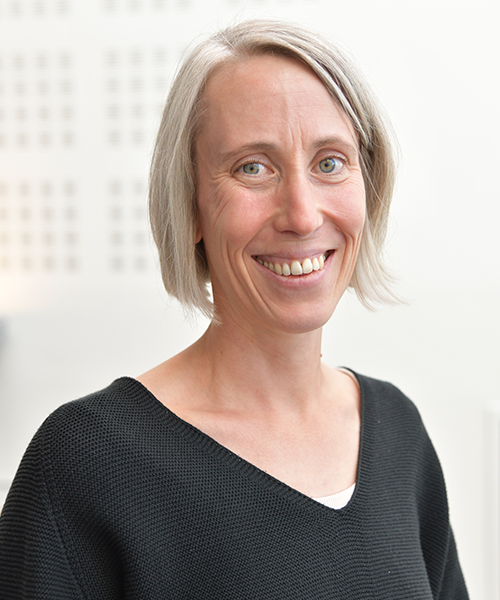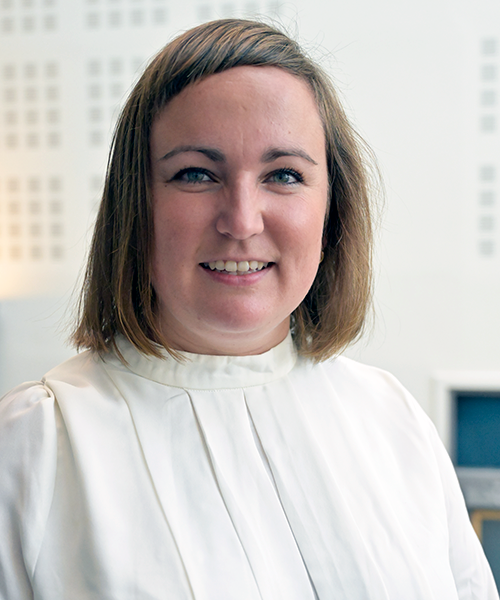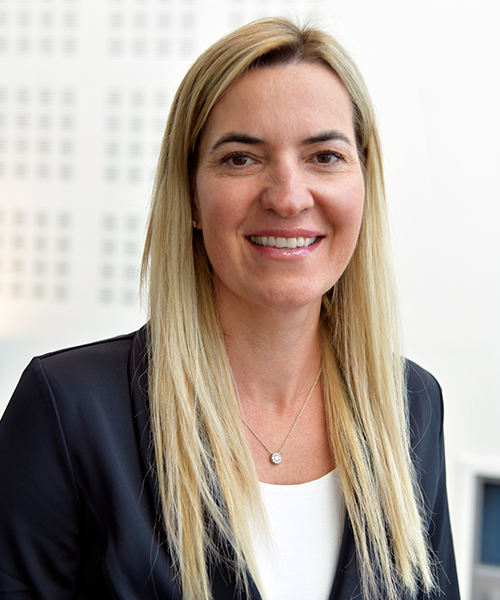New R&D Manager appointed
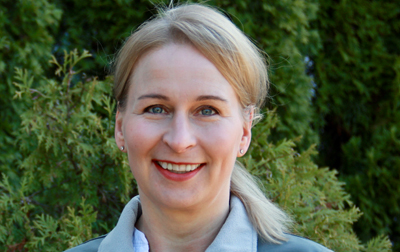
New R&D Manager appointed
We are pleased to announce the appointment of Dr. Marja Mikkola as our new R&D Manager in SpermVital.
She is a veterinarian from Helsinki University, Finland and holds a PhD from the same institution.
She will be a great asset to the SpermVital team with her broad experience on Assisted Reproduction Technologies (ARTs) in cattle, with special emphasis on female fertility and embryo technologies as well as the application of sex-sorted semen.
Her responsibilities will be to further document the advantages of the SpermVital technology as well as developing it further into new products and applications.
Tolle Ergebnisse in österreichischer Studie
SPERMVITAL ZEIGT KLARE VORTEILE IN ÖSTERREICH
Im Flechvieh Austria Magazin 6/2020 erschien ein Artikel, der die Ergebnisse einer Diplomarbeit für Genostar in Österreich vorstellte.
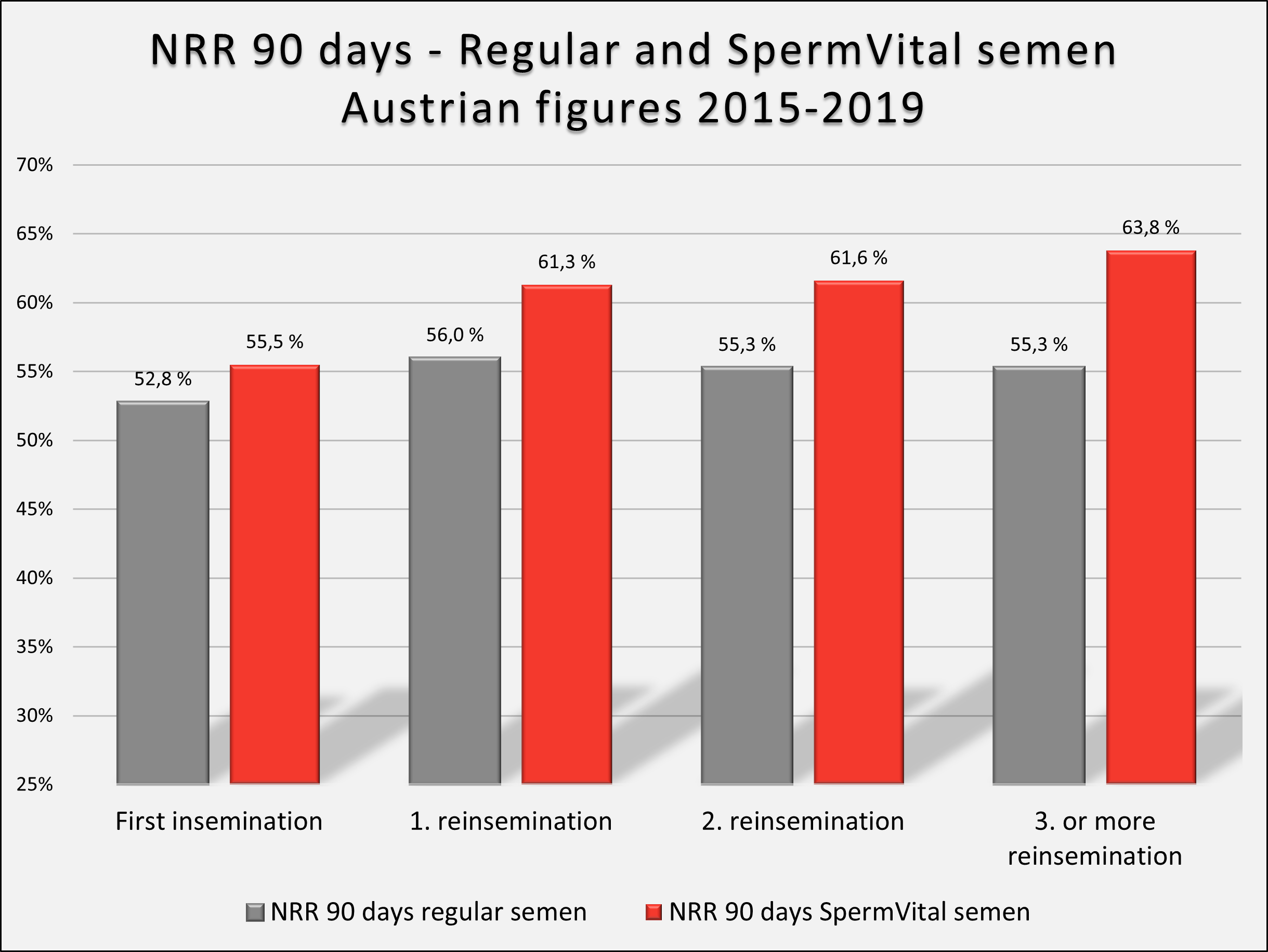
Die Studie bezieht sich auf Besamungen in Herden, die im Zeitraum von 2015 bis 2019 SpermVital-Sperma verwendet hatten.
Die Verwendung des SpermVital-Spermas in der Studie zeigte im Durchschnitt eine um 6 % höhere NRR bei Färsen und eine um 4,4 % höhere bei Kühen. Bei Wiederholungsbrütern war das Ergebnis sogar noch größer, mit einem Unterschied von bis zu 8,5 % bei Tieren mit mehr als drei Besamungen.
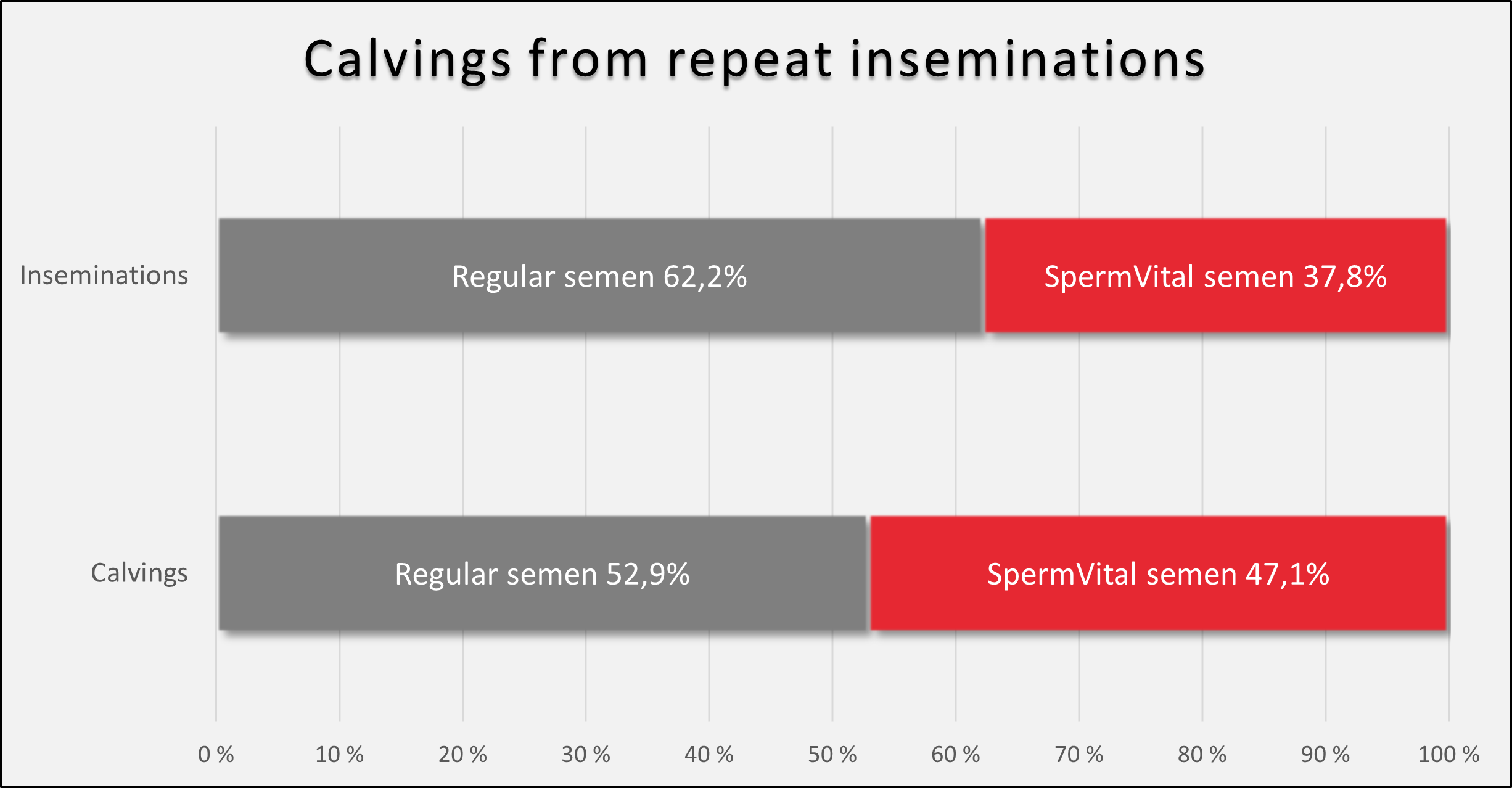
Die Ergebnisse von Genostar unterstützen die von Masterrind im Jahr 2019 durchgeführte Studie, die einen Vorteil von 8,3 % im NRR für SpermVital bei früher Befruchtung zeigte.
Der Artikel kann hier gelesen werden.
Vikinggenetics will launch SpermVital
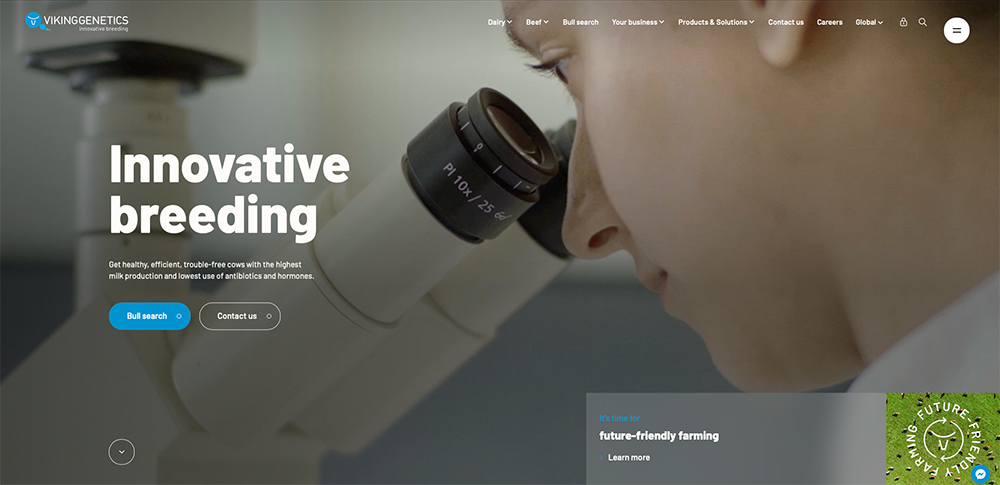
Vikinggenetics will launch SpermVital
Vikinggenetics and SpermVital have signed an agreement where Vikinggenetics will launch SpermVital's unique technology on their own genetics.
VikingGenetics is a co-operative owned by 20,000 dairy and beef farmers in Denmark, Sweden, and Finland. They are experiencing a significant demand both in the Scandinavian markets as well as in the European market for the SpermVital technology.
The SpermVital technology already has a significant market share in Europe and this agreement will give the European farmers access to the SpermVital technology on Viking genetics.
Masterrind-Versuch demonstriert SpermVital-Vorteil
Im Sommer und Herbst 2019 führte Masterrind einen Feldversuch durch, bei dem es darum ging, SpermVital®-Sperma im Vergleich zu gewöhnlichem Sperma zu testen.
| Der Versuch ergab deutliche Hinweise, dass sich eine frühe Besamung mit SpermVital®-Samen positiv auf die NRR auswirkt. |
Nachfolgend finden Sie die Ergebnisse der Studie.
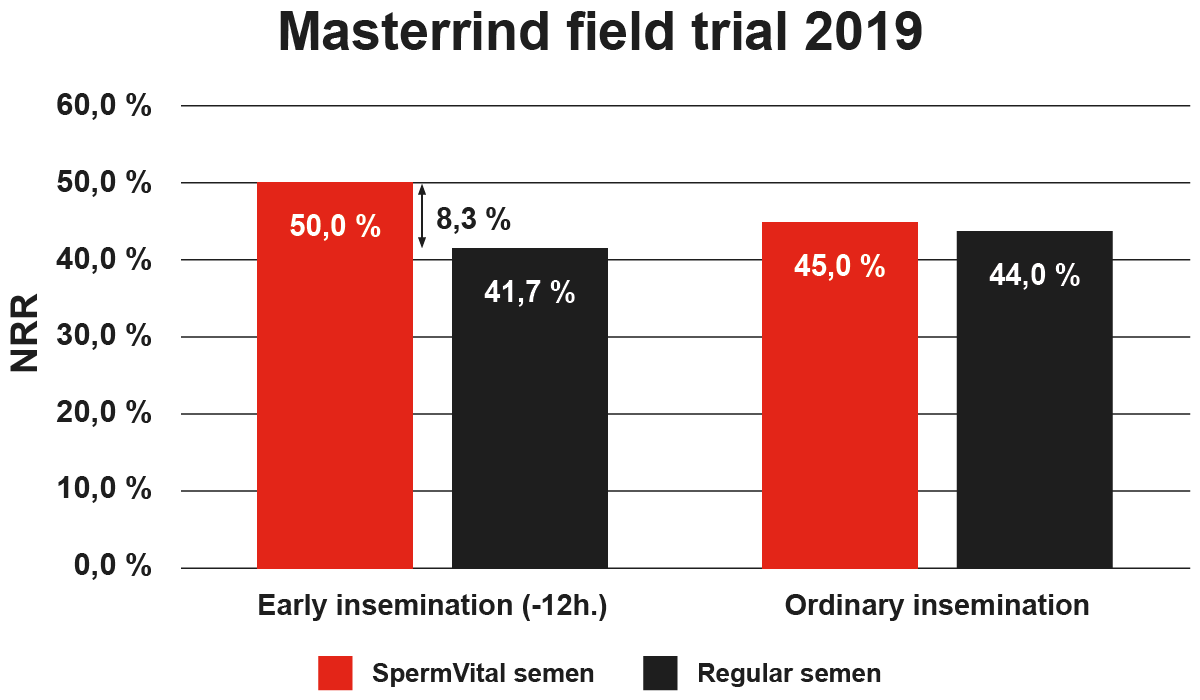
Der Feldversuch wurde unabhängig von Masterrind durchgeführt, wobei Dosen ursprünglich für den Verkauf hergestellt wurden. Der Versuch umfasste 5 Farmen. Alle Betriebe verwendeten Heatime-Systeme als Basis für die Brunsterkennung. Insgesamt wurden 440 Kühe und Färsen besamt, aufgeteilt in vier Gruppen. Basierend auf dem Heatime-System wurden etwa 50 % der Kühe und Färsen 12 Stunden vor dem optimalen Zeitpunkt besamt, entweder mit SpermVital®-Samen oder mit regelmäßigen Samendosen von denselben Bullen. Der Samen wurde nicht in geteilten Probendosen produziert. Die andere Hälfte der Kühe wurde zum optimalen Zeitpunkt entweder mit SpermVital®-Samen oder mit Normalsperma besamt. Brunsterkennung wurde durch Ultraschall durchgeführt.
The figure show:
- SpermVital-Sperma ergab bei früher Besamung eine um 8,3 % höhere NRR als normales Sperma.
- SpermVital-Sperma, das früh besamt wurde, ergab eine höhere NRR als sowohl SpermVital-Sperma als auch gewöhnliches Sperma, das zum gewöhnlichen Zeitpunkt besamt wurde.
Aufgrund der relativ kleinen Anzahl in jeder Gruppe war keiner der Unterschiede statistisch signifikant. Das Ergebnis weist jedoch darauf hin, dass die frühe Besamung mit SpermVital®-Samen vorteilhaft ist, da Schwankungen des Ovulationszeitpunkts im Verhältnis zu Läufigkeitssymptomen durch die verlängerte Lebensdauer des SpermVital®-Samens abgedeckt werden.
Effect of SpermVital® technology on conception rate in repeat breeder multiparous dairy cows: preliminary results.
Effect of SpermVital® technology on conception rate in repeat breeder multiparous dairy cows: preliminary results.
Published in: Turkish journal of veterinary and animal sciences.
Authors: Alper KOÇYİĞİT, Barış Atalay USLU, Sait ŞENDAĞ, Elisabeth TREUPEL, Axel WEHREND 1Department of Reproduction and Artificial Insemination, Faculty of Veterinary Medicine, Cumhuriyet University, Turkey 2Clinic of Obstetrics and Gynecology, Faculty of Veterinary Medicine, Van Yüzüncü Yıl University, Turkey 3Clinic for Veterinary Obstetrics Gynecology and Andrology, Justus-Liebig-University, Giessen, Germany.
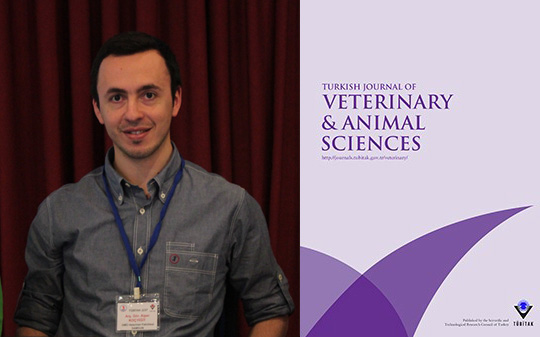
The aim of this study was to investigate the effect of SV technology on conception rates in repeat breeder multiparous dairy cows. Seventy-nine multiparous Holstein cows from a private dairy farm were used in the study. These animals were cows that had failed to conceive from at least 3 regularly spaced services (repeat breeders). Estrus cycles of the cows were synchronized by 2 injections of the PG analogue, administered 11 days apart. GnRH was applied 48 h after the second injection of PG. Twenty-four h after this administration, the animals were randomly divided into 2 groups, control and SV. The animals in the control group (n = 28) were inseminated with standard processed semen, and the cows in the SV group (n = 51) were inseminated with SV® technology processed semen. A lower pregnancy rate (35.5%) was determined in the control group than in the SV (47.1%) group. The difference between pregnancy rates in the groups was statistically significant (P < 0.05). We are at too early a stage to say that SV® Technology can fully respond to the deficiencies in herd management. This work may also lead to future studies into the use of more animal material.
Comparison of sperm adenosine triphosphate content, motility and fertility of immobilized and conventionally cryopreserved Norwegian Red bull semen
Comparison of sperm adenosine triphosphate content, motility and fertility of immobilized and conventionally cryopreserved Norwegian Red bull semen
Published in: Theriogenology volume 121, November 2018, Page 181-187
Authors: Halldor Felde Berg, Elisabeth Kommisrud, Godlove Bai, Eline Rustad Gaustad, Geir Klinkenberg, Fride Berg Standerholen, Lill Therese Thorkildsen, Karin Elisabeth Waterhouse, Erik Ropstad, Bjørg Heringstad, Anne Hege Alm-Kristiansen
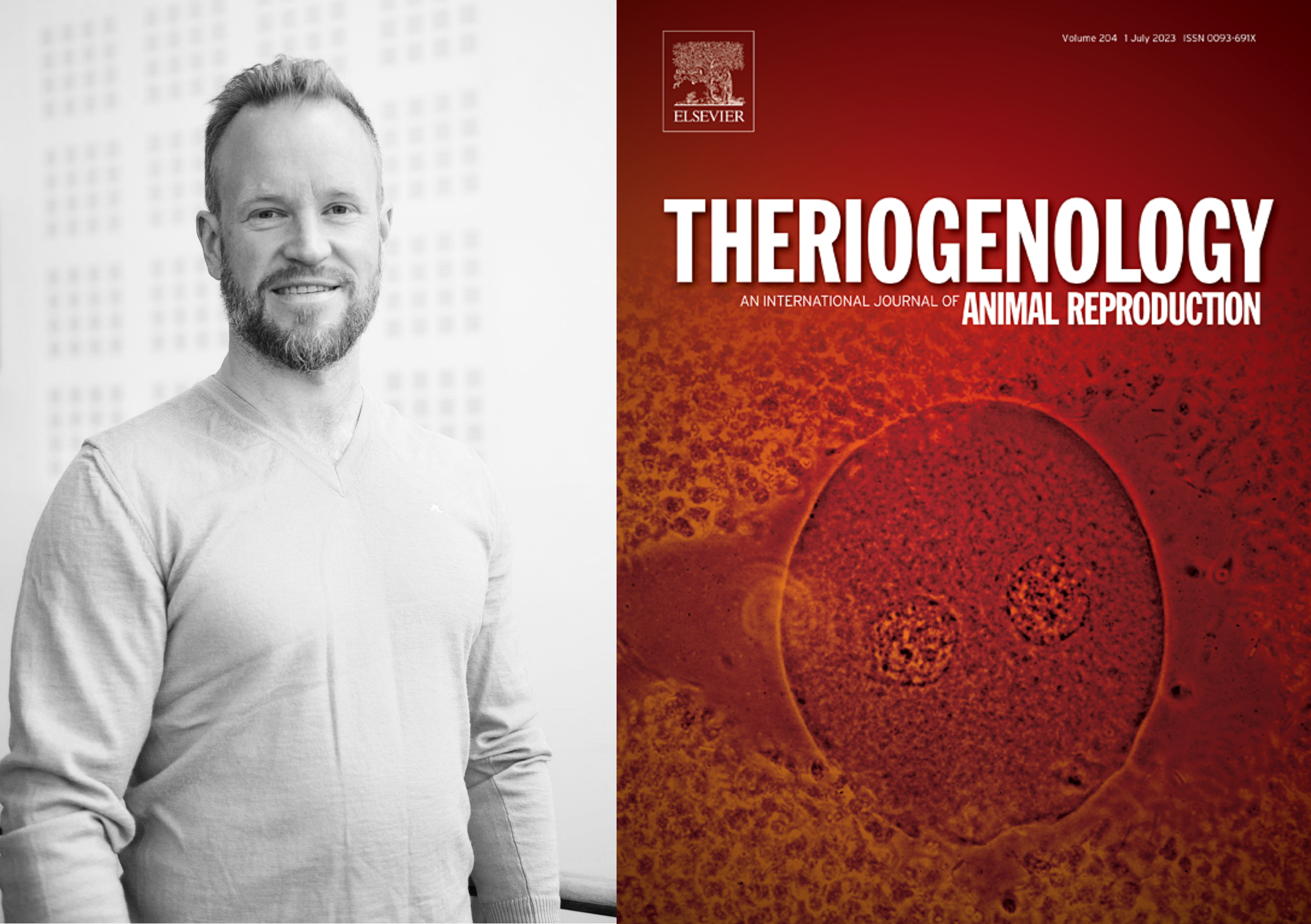
Estrus detection and timing of AI remains a challenge in cattle breeding. Prolonging spermatozoa lifespan after AI, making sperm cells available over an extended period, could make timing of AI relative to ovulation less crucial and improve fertility. Immobilization of sperm cells by the patented SpermVital technology in an alginate gel will provide a gradual release of spermatozoa after AI. The first aim of this study was to examine fertility, measured as non-return rate after 56 days (NR56), of SpermVital (SV) processed semen with reduced sperm cell number per dose compared to earlier studies, and compare with conventionally processed semen in Biladyl, a proprietary version of the egg yolk Tris semen extender. The second aim was to examine in vitro sperm quality post-thaw and after thermal stress. The third aim was to examine potential correlations between in vitro sperm parameters and NR56. Ejaculates from 16 Norwegian Red young bulls were split in three, processed and cryopreserved as Biladyl semen (B15; 15 million spermatozoa/dose) or by SpermVital technology (SV25; 25 million spermatozoa/dose or SV15; 15 million spermatozoa/dose). 1400 semen doses were produced per bull and distributed throughout Norway for a blinded field trial. Fertility was recorded as NR56 after first AI (N = 7155). Two ejaculates from each bull were randomly selected for in vitro experiments. B15 and SV15 semen samples were analyzed for motility by computer-assisted sperm analysis, viability and acrosome integrity by flow cytometry and ATP content by bioluminescence assay, post-thaw and after thermal stress. The AI trial detected no differences in NR56; least square means being 75.5% (B15), 75.6% (SV25) and 74.8% (SV15) (p > 0.05). There were no differences in total motility and progressive motility post-thaw, however, after three hours incubation at 38 °C, SV sperm motility and progressivity were higher for SV15 than for B15 spermatozoa (p < 0.05). The percentage of acrosome intact live sperm cells was higher for SV15 than B15 spermatozoa at all timepoints analyzed (0 h, 3 h, 24 h, p < 0.05). B15 semen showed a higher ATP level than SV15 at 0 h (p < 0.05), while SV15 sperm cells had higher ATP levels after 3 and 24 h (p < 0.05). No association was detected between in vitro sperm parameters and NR56. In conclusion, SV15, SV25 and B15 semen yielded equal fertility after AI. However, there were differences in sperm quality, as SV15 spermatozoa displayed higher motility, viability and ATP levels after thermal stress than B15 spermatozoa (p < 0.05).
Performance of SpermVital Technology on Pregnancy Rate in Repeat Breeder Dairy Cows
Performance of SpermVital Technology on Pregnancy Rate in Repeat Breeder Dairy Cows
Poster by A. Kocyigit, B.A. Uslu, S. Sendag, A. Wehrend
DVG-VET-Congress, Berlin, Estrel Convention Center 9-12 November 2017
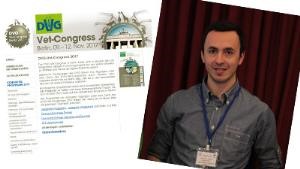
SpermVital® semen can replace double inseminations.
The increased longgivity of SpermVital® semen demonstrated in field trial.
SpermVital® conducted two separate field studies in different markets during 2014 to investigate whether the SpermVital® semen had increased longevity in cows and heifers.
The studies comprised of a total of 491 animals (both beef and dairy breeds were included), randomized into two groups, and then synchronized for estrus.
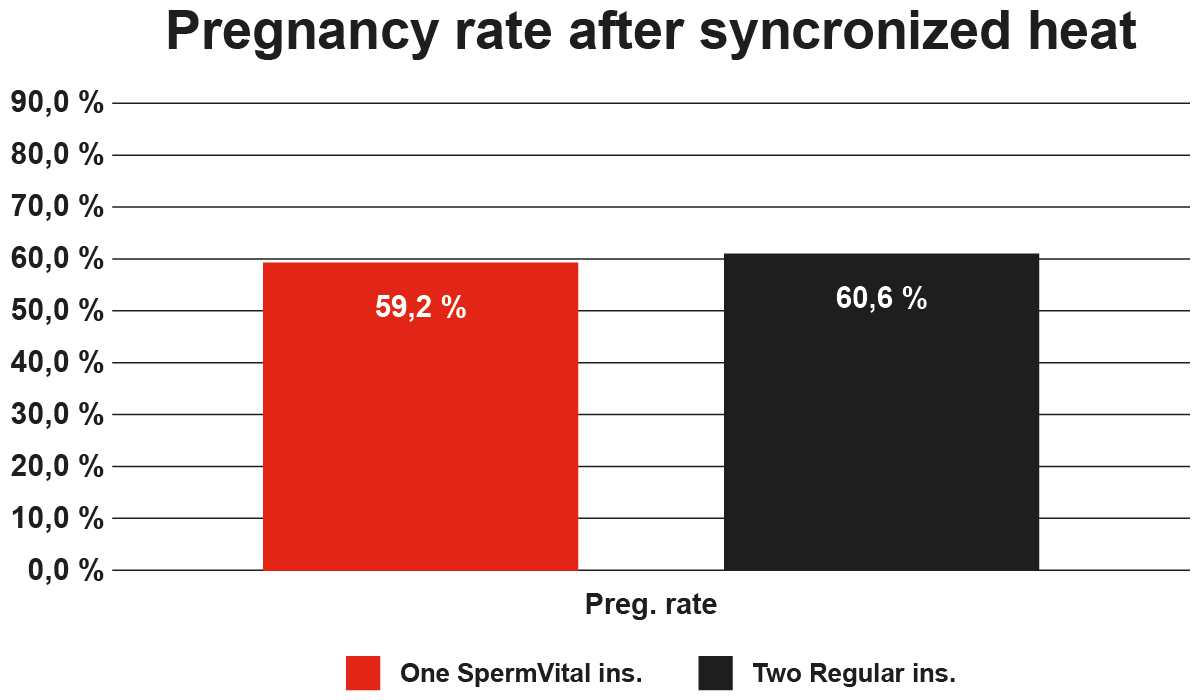
Thereafter, approximately half the cows and heifers were inseminated on day 3 after estrus synchronization with one dose of SpermVital semen. The other half were inseminated on both day 3 and 4 with standard processed bull semen.
Normally, it is expected that insemination on two consecutive days will give a higher pregnancy rate than only one insemination. The results showed that the Non return rate did not differ significantly.
The studies prove that the animals inseminated with SpermVital® semen had equally good access to fertile sperms compared to those animals inseminated on two concecutive days with regular semen. These studies support the recommendation that one dose of SpermVital® semen can replace double inseminations with standard semen. Furthermore, the studies imply that the SpermVital® technology prolongs the lifespan of sperm cells.










